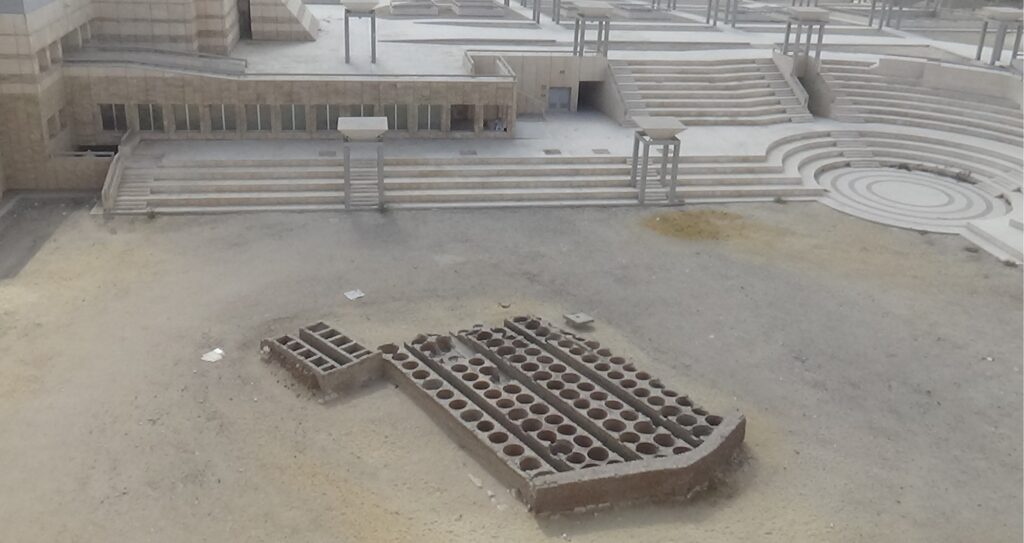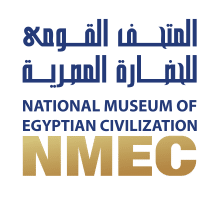The National Museum of Egyptian Civilization (NMEC) embraces at its western edge, an exclusive archeological dye-house that dates back to at least the first century of the Fatimid period (A.D. 969–1171).
The archaeological site was first discovered in 1932 A.D and was rediscovered again during the preliminary excavations that preceded the construction of the museum, between the years 2003 and 2004.
The dye house at NMEC is utterly magical as it is the only well-preserved evidence of ancient dye houses ever existed in Cairo.

The archaeological exploration is a vivid illustration of how evolved the textile industry was in Egypt since the Fatimid era, and it affirms Egypt’s historical position as a pioneering civilization of textile production.
Ancient Egyptians learned to extract coloring agents from available natural resources and to permanently dye the fabrics.
The dyeing industry sustained starting from the times of Ancient Egypt, advanced during the Islamic eras till our current time, leading the dye-house to become a prominent destination to the museum’s visitors.
When it was first excavated, the dye-house was thought to be an oil mill, however, such proclamation was denied due to the scientific excavations conducted at the historical site that approved the existence of additional remains at the historical area, as well as some substances that were used in the dyeing production.
The archaeological dye-house layout consists of three double-eyed rows, with thirteen basins in each row. In addition, there are thirteen single basins on the northern side of the dye-house supported by a brick wall, inferring that very end of the dye house from this particular side. Moreover, each basis is constructed of small red bricks, separated by a 50 centimeters alley, while each group of basins are separated by an alley of 20 meters long. Furthermore, each basin is rounded in shape, with a diameter of about 80 centimeters, and a height of 70 centimeters. However, on the north side, ten rectangular basins standstill, as it was believed that these basins were used to set the dye, as the final step of the dyeing process.
Throughout their tour, visitors will learn more about Egypt’s cultural heritage and traditions, affirming the pioneering role of Egyptian Civilization in maintaining the textile industry.
